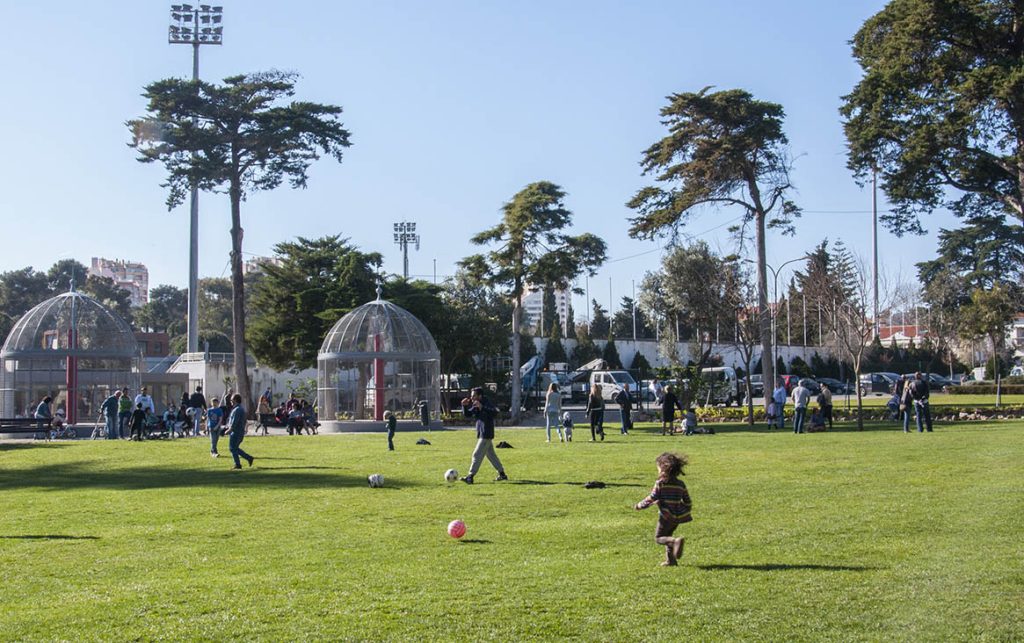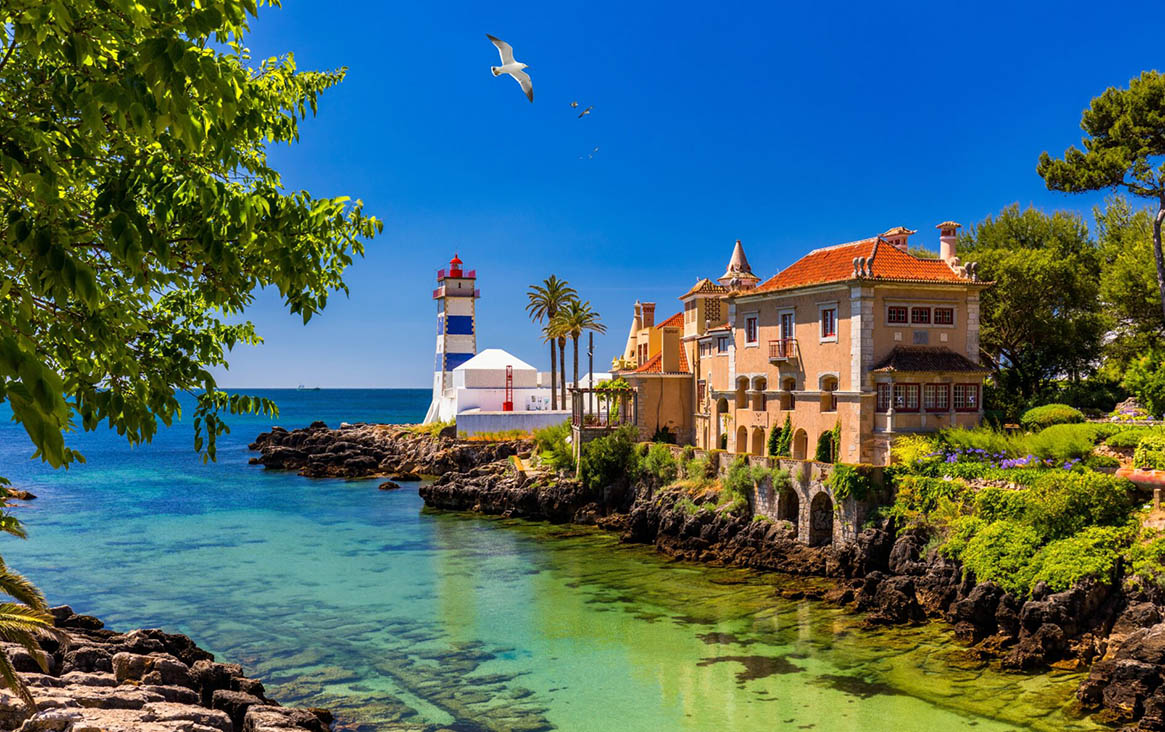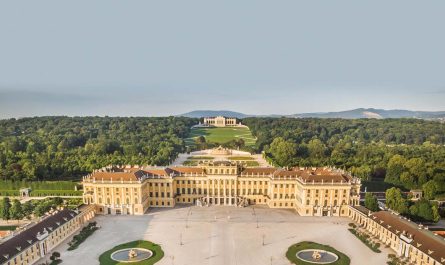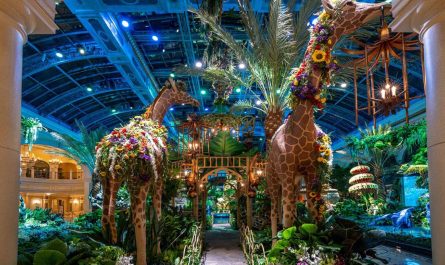Cascais, often called the “Portuguese Riviera,” had been on my travel wishlist for a long time. This charming coastal town, just a short distance from Lisbon, boasts stunning shorelines, a rich history, and vibrant culture. I’ll share my one-day itinerary in Cascais, highlighting the best things to do, places to visit, and how to make the most of your time in this beautiful seaside gem.
Getting from Lisbon to Cascais
Cascais is conveniently accessible from Lisbon, and there are several easy transportation options to choose from:
By Taxi:
On the morning of my trip, I opted for a taxi ride from my hotel in Lisbon to Cascais. Taking a taxi is undoubtedly one of the most comfortable and hassle-free ways to travel. The ride took about 30 minutes, offering scenic views along the Tagus River. While taxis are pricier compared to public transport, they’re ideal for travelers looking for convenience and a direct route to their destination.
By Train:
For those who prefer to experience the local way of life, taking the train is the best option. I’ve taken the train from Lisbon’s Cais do Sodré station to Cascais before, and it’s a delightful journey that takes only about 40 minutes. The train ride offers beautiful views, especially when passing through Estoril, where you can see the stunning coastline. The ticket is very affordable, costing just a few euros for a one-way trip, making it an economical choice for budget-conscious travelers.
By Bus:
If you enjoy leisurely travel and scenic routes, taking the bus is also a great option. Buses depart from Lisbon’s Sete Rios or Marquês de Pombal bus stations and reach Cascais in about an hour. The ride offers a charming view of rural landscapes and quaint towns along the way, adding a touch of local flavor to the journey.
What to Do and See in Cascais
Once I arrived in Cascais, I began my day by exploring the town’s historical center. The area is a perfect blend of old-world charm and vibrant local life, with narrow cobblestone streets and traditional Portuguese houses.
Strolling Through the Historic Center
The historic center of Cascais is one of the most charming areas I’ve had the pleasure of exploring. As I wandered through its narrow, winding streets, I was immediately captivated by the vibrant and lively atmosphere that permeates the town. The streets are lined with an array of unique shops, cozy cafés, and traditional Portuguese restaurants. Each shop seemed to have its own character, from boutiques selling handcrafted jewelry to stores offering local art and souvenirs.
The architecture of the buildings in this area is particularly striking. Many of them feature colorful facades adorned with intricate tilework, known as “azulejos,” which are a hallmark of Portuguese design. The balconies, often decorated with blooming flowers and wrought-iron railings, add to the town’s picturesque charm. I spent hours simply strolling around, taking in the beauty of the buildings and snapping photos of the vibrant colors and charming details.
Among the highlights of my walk were the local artisan shops. These shops are a treasure trove of handmade crafts, including pottery, textiles, and traditional Portuguese ceramics. I found a beautiful hand-painted tile that I knew would make a perfect souvenir to remember my visit. The craftsmanship and attention to detail in these pieces are a testament to the artistic spirit that thrives in Cascais.
Walking Along the Marina
After immersing myself in the historic center, I decided to head towards the marina, a beautiful waterfront area that is another highlight of Cascais. The marina offers a perfect setting to unwind and enjoy the fresh ocean breeze. The best times to visit are early in the morning or late in the afternoon, when the light is soft and the air is cool and refreshing.
As I strolled along the marina, I was greeted by a stunning array of boats, ranging from modest fishing vessels to extravagant yachts. The sight of the gleaming boats against the backdrop of the shimmering sea was simply breathtaking. I enjoyed watching the gentle sway of the boats and the peaceful rhythm of the water.
Nearby, several seafood restaurants offer fantastic dining options. I chose one of the waterfront restaurants for lunch, eager to try some of the freshest seafood available. The restaurant’s outdoor seating allowed me to enjoy my meal while taking in the scenic views of the marina. I sampled a variety of seafood dishes, including grilled sardines, succulent prawns, and tender octopus. Each dish was delicious and perfectly complemented by a glass of crisp white wine.

Visiting the Santa Marta Lighthouse (Farol de Santa Marta)
Post-lunch, I made my way to the Santa Marta Lighthouse, a must-see landmark in Cascais. This iconic lighthouse, perched on a rocky outcrop along the coast, is renowned for its historical and architectural significance. The lighthouse is not only a functional navigational aid but also a symbol of the town’s maritime heritage.
The lighthouse itself is a striking structure with its distinctive white and red stripes, standing tall against the backdrop of the azure sea. Inside the lighthouse, there is a small museum that provides fascinating insights into the history of lighthouses in Portugal. The exhibits include old navigational equipment, historical photographs, and interactive displays that explain the role of lighthouses in maritime safety.
Climbing to the top of the lighthouse was a highlight of my visit. From this vantage point, I was rewarded with panoramic views of the Atlantic Ocean and the surrounding coastline. The view was absolutely spectacular, with the vast expanse of the ocean stretching out to the horizon and the rugged coastline dotted with cliffs and rocky outcrops. The opportunity to take in such a breathtaking view made the climb well worth it. It was the perfect spot for a few final photos to capture the beauty of Cascais and the stunning natural scenery.
Exploring the Condes de Castro Guimarães Museum
Next on my itinerary was the Condes de Castro Guimarães Museum, a stunning destination that provided a fascinating glimpse into the opulent past of Cascais. Originally a private residence, the museum is housed in a grand palace that showcases a rich blend of architectural styles. As I approached the museum, I was immediately struck by its elegant façade, which combines elements of neo-Gothic and romantic architecture, creating an air of grandeur and charm.
Upon entering, I was greeted by the museum’s eclectic collection of artwork and historical artifacts. The interior is just as impressive as the exterior, with richly decorated rooms that reflect the tastes of the aristocratic family who once lived here. The museum’s collection includes an array of period furniture, exquisite ceramics, and fine art pieces, each telling a part of Cascais’ storied history. One of the museum’s highlights is its library, a treasure trove of rare books and manuscripts. As I wandered through the library, I marveled at the collection of old tomes, which offer a fascinating insight into the intellectual and cultural life of the era. The library’s ornate design and the sense of history in the air made it a particularly memorable part of my visit.
Strolling Through Marechal Carmona Park
After my enriching visit to the museum, I decided to head to Marechal Carmona Park, a beloved green space that offers a refreshing escape from the town’s bustling center. The park, known for its expansive lawns and tranquil lakes, is the perfect place to relax and enjoy nature. The pathways that wind through the park are lined with lush vegetation and provide a serene setting for a leisurely stroll.

I found a quiet bench nestled among the trees and took a moment to sit and appreciate the park’s beauty. The gentle rustle of the leaves and the chirping of birds created a peaceful atmosphere that was a pleasant contrast to the more tourist-heavy areas of Cascais. The park also features a charming petting zoo, which added a touch of whimsy to the visit. It was a delight to see families with children interacting with the animals, and the zoo’s presence made the park an even more appealing destination for visitors of all ages.
Discovering the Cascais Citadel (Cidadela de Cascais)
My final stop for the day was the Cascais Citadel, an impressive fortress that sits at the western edge of the town. The citadel, dating back to the 16th century, is a remarkable piece of history that has been meticulously preserved. As I walked through the fortress, I was struck by its robust walls and historic architecture, which offer a glimpse into the military past of Cascais.
The citadel also houses a contemporary art gallery, providing an interesting juxtaposition of old and new. As I explored the gallery, I was impressed by the way modern art was integrated into the historic setting of the citadel, creating a unique cultural experience. Walking along the fortress walls, I was treated to breathtaking views of Cascais and the Atlantic Ocean. The vantage point offered panoramic vistas that were particularly stunning as the sun began to set. The golden light cast a warm glow over the landscape, enhancing the already spectacular views. The combination of historical ambiance and natural beauty made the citadel a fitting and memorable conclusion to my day in Cascais.
Spending a day in Cascais left me with wonderful memories and a deep appreciation for this charming town. The journey from Lisbon to Cascais was incredibly convenient, and the town itself is rich with history, culture, and natural beauty. Whether you’re strolling through the historic streets, enjoying the seaside views at the marina, visiting the lighthouse and museums, or simply relaxing in the park, Cascais offers a perfect blend of tranquility and vibrancy. For anyone planning a trip to Portugal, Cascais is a must-visit destination where you can experience the best of what the country has to offer—history, culture, and stunning coastal landscapes.



